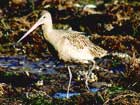
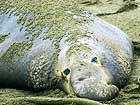

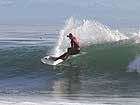
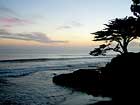
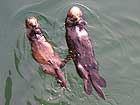
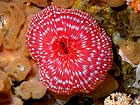
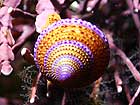
.jpg)

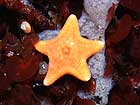
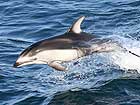
Ways To Get Involved in Coastal and Ocean Stewardship
Monterey Bay National Marine SanctuaryMonterey Bay Sanctuary Advisory Council and Working Groups: The Monterey Bay Sanctuary Advisory Council was established in March 1994 to ensure continued public participation in the management of the sanctuary. Serving in a volunteer capacity, the Advisory Council’s 20 voting members represent conservation, research, education, recreation, fishing, tourism, diving, agriculture and public interests, as well as seven local, state and federal governmental jurisdictions. The advisory council meets every other month in daytime public sessions held in varying locations along the coast bordering the sanctuary. Four working groups, dealing with matters related to research, education, conservation and business/tourism, also support the Advisory Council. The working groups are composed of volunteer experts from the appropriate fields of interest and meet monthly, or bi-monthly. For more information, contact the Sanctuary Advisory Council Coordinator, Nicole Capps at (831) 647-4206 or via email at: nicole.capps@noaa.gov. Team OCEAN (Ocean Conservation Education Action Network)The Sanctuary's Team OCEAN Program puts trained, knowledgeable naturalists on the water in kayaks to greet and interact with fellow kayakers. The naturalists serve as docents for the marine sanctuary, promote respectful wildlife viewing, and protect marine mammals from disturbance. Team OCEAN has proven to be a successful program with thousands of contacts per year. Team OCEAN volunteers can be found in Elkhorn Slough and along the kelp beds off Cannery Row in Monterey. For more information contact Lisa Emanuelson at (831) 647-4227 or via email at lisa.emanuelson@noaa.gov. Bay NetBay Net is a shoreline docent program. Trained volunteers act as both on-site interpreters and shoreline ambassadors for the Sanctuary. Given their field presence, volunteers also serve as additional eyes and ears to help monitor natural and human activities. For more information contact, Lisa Emanuelson at (831) 647-4227 or via email at lisa.emanuelson@noaa.gov. Beach COMBERS (Coastal Ocean Mammal/Bird Education and Research Surveys)Beach COMBERS is a beach-monitoring program that uses trained volunteers to survey beached marine birds and mammals at selected sections of beaches throughout the Monterey Bay area. The program is a collaborative project between Moss Landing Marine Laboratories, the Monterey Bay Sanctuary, and other state and research institutions including the California Department of Fish and Wildlife and Marine Wildlife Veterinary Care and Research Center, with the specific goal of using deposition of beach cast carcasses as an index of the health of the sanctuary. For more information on Beach COMBERS, please contact Hannah Nevins, Project Leader at (831) 771-4422 or via email at hnevins@mlml.calstate.edu. Monterey Bay Sanctuary Citizen Watershed Monitoring NetworkThe Monterey Bay Sanctuary Citizen Watershed Monitoring Network is a consortium of local citizen groups monitoring the health of the watersheds flowing into the Monterey Bay Sanctuary. Trained volunteers collect valuable water quality information that is used by resource agencies, local governments, and community groups to protect and improve the health of local watersheds. The Network also coordinates three annual regional monitoring events:
Ongoing results from these programs help identify pollution trends, guide upstream investigations, develop targeted education programs, and build better management practices. For information on upcoming volunteer training opportunities, please contact Lisa Emanuelson, Monterey Bay Sanctuary Citizen Monitoring Network Coordinator at (831) 647-4227 or via email at lisa.emanuelson@noaa.gov. Sanctuary Exploration CenterThis Monterey Bay Sanctuary Exploration Center highlights the spectacular Monterey Bay National Marine Sanctuary. Overlooking the ocean, the Sanctuary Exploration Center is located in the heart of the Santa Cruz's famed beach area just steps away from the city's Municipal Wharf. The center features engaging interactive and multi-media exhibits to help visitors explore the sanctuary's remarkable marine environment, as well as their personal role in protecting this special underwater treasure. Docents interpret exhibits to the public, conduct guided tours, assist in daily operations and participate in events and programs. Coastal Discovery CenterThe Coastal Discovery Center at San Simeon Bay is an environmental and nature center cooperatively operated by the Monterey Bay National Marine Sanctuary and California State Parks. Located at beautiful and historic William R. Hearst Memorial Beach in San Simeon, the Coastal Discovery Center offers information on natural and cultural resources along the central California coast. The Discovery Center is open three days a week and is staffed by docents. Docent activities include greeting visitors in the Coastal Discovery Center, leading history walks along San Simeon Pier and participating in educational programs for school groups. For more information, please contact the Monterey Bay Sanctuary Southern Region Program Coordinator, Carolyn Skinder at (805) 927-2145 or via email at carolyn.skinder@noaa.gov Monterey Bay Aquarium
California State ParksCalifornia State Parks contains the largest and most diverse natural and cultural heritage holdings of any state agency in the nation. State park units include underwater preserves, reserves, and parks; redwood, rhododendron, and wildlife reserves; state beaches, recreation areas, wilderness areas, and reservoirs; state historic parks, historic homes, Spanish era adobe buildings, including museums, visitor centers, cultural reserves, and preserves; as well as lighthouses, ghost towns, waterslides, conference centers, and off-highway vehicle parks. The agency is responsible for almost one-third of California's scenic coastline, managing the state's finest coastal wetlands, estuaries, beaches, and dune systems. State park docents are trained volunteers who interpret the cultural, natural and recreational resources for park visitors. Park units provide training programs where participants learn interpretation techniques, and specific information about the natural and historical features of the park unit. Docent duties may include hosting visitor centers, conducting nature walks and school program tours, and assisting with special events.
State parks districts and cooperating associations with volunteer opportunities in the central coast region listed in order from north to south include, but are not limited to, the following:
Elkhorn Slough National Estuarine Research Reserve and FoundationElkhorn Slough (pronounced "slew") harbors the largest tract of tidal salt marsh in California outside of San Francisco Bay. This ecological treasure at the center of the Monterey Bay coastline provides much-needed habitat for hundreds of species of plants and animals, including more than 340 species of birds. More than 150 volunteers assist with the reserve's education and research programs, supporting a mission to ensure the perpetual health of the ecosystems in the Elkhorn Slough and surrounding watershed. For more information call Amanda Ankenbrandt, Volunteer Coordinator (831) 728-2822 ext. 303 or via email at aankenbrandt@dfg.ca.gov. American Cetacean Society, Monterey Bay ChapterThe American Cetacean Society engages in educational, conservational, and scientific pursuits for the purpose of expanding knowledge of whales, dolphins, porpoises, and related creatures. Services offered by the Monterey Bay Chapter include monthly meetings open to the public, featuring presentations about whales, dolphins and related aspects of the marine environment.
Big Sur Land TrustThe mission of the Big Sur Land Trust is to conserve the significant lands and waters of California’s Central Coast for all generations. Working with private and public partners, The Big Sur Land Trust has successfully conserved more than 30,000 acres of shoreline, wildlife habitat, streams, forests, grasslands, rangelands and riparian corridors, through projects such as the Carmel River Parkway, habitat restoration at Martin Dunes, and the purchase of Palo Colorado Canyon. Big Sur Land Trust volunteers lead hikes, share interpretive information, remove invasive weeds, plant native plants, and actively care for the land that BSLT has helped protect for 28 years. The Carmel River Parkway is one of the many projects of the BSLT that provides valuable volunteer opportunities. For more information call (831) 625-5523.
California Coastal CommissionCoastal Cleanup Day: Coastal Cleanup Day is the highlight of the California Coastal Commission's year-round Adopt-A-Beach program and takes place every year on the third Saturday of September, from 9 a.m. to Noon. Coastal Cleanup Day is a great way for families, students, service groups, and neighbors to join together, take care of our fragile marine environment, show community support for our shared natural resources, learn about the impacts of marine debris and how we can prevent them, and have fun! Coastal Cleanup Day is also the kick-off event for Coastweeks—three weeks of coastal and water-related events for the whole family. Since the program started in 1985, over 800,000 Californians have removed more than 15 million pounds of debris from our state's shorelines and coast. When combined with the International Coastal Cleanup, organized by The Ocean Conservancy and taking place on the same day, California Coastal Cleanup Day becomes part of one of the largest volunteer events of the year. For more information, contact us at (800) COAST-4U or coast4u@coastal.ca.gov. Carmel River Watershed ConservancyThe organization promotes programs that conserve the Carmel River, educates about matters relating to the river, and to acts as a catalyst for co-operative efforts within the watershed and the Central coast region. For more information, please email Clive Sanders at crwcsteelhead@pacbell.net. Coastal Watershed CouncilThe Coastal Watershed Council strives to protect coastal watersheds through monitoring, research, education and stewardship, and has established volunteer water quality monitoring programs in a number of watersheds throughout the Monterey Bay region. For more information call (831) 464-9200 or email urbanwatch@coastalws.org. Friends of the Elephant SealFriends of the Elephant Seal, located in Cambria, California, is a non-profit organization dedicated to educating the public about elephant seals and other marine life. Docents are stationed at a vista point overlooking the Piedras Blancas elephant seal rookery, just off Highway 1 seven miles north of San Simeon. Volunteers learn about elephant seals and other marine life and have an opportunity to talk with visitors from all over the country and the world. For more information on volunteer programs call (805) 924-1628. Marine Life StudiesThe mission of the Marine Life Studies is to protect marine life and preserve the health and beauty of the oceans now and for the future through education, research and stewardship programs. Marine Life Studies programs include outreach programs in the schools, the Junior Research Scientist Program, and educational presentations on marine life entanglement, manmade disasters, pollution, and hazards. The group also specializes in humpback whale fluke identification and Killer Whale and dolphin markings and fluke identification. For more information about volunteering, please contact Peggy Stap at peggy@marinelifestudies.org.
Monterey CoastkeeperThe Monterey Coastkeeper was formed to address water quality issues through policy advocacy and legal tools designed to ensure that the interests of development, industry and urban activity are kept in-line with environmental needs. Monterey Coastkeeper's major programs include monitoring urban and agricultural runoff and marine protected area stewardship. For more information call; (831) 646-8839. Ocean ConservancyOcean Conservancy works on a national and international scale to promote practical policies that protect the ocean. Priorities include marine spatial planning, marine debris, sustainable fisheries, marine protected areas, the warming of the artic, and aquaculture. In all its work, volunteerism and grassroots activism play a vital role in its efforts. One of the most compelling and effective volunteer opportunities is Ocean Conservancy’s International Coastal Cleanup event. Each year, millions of pounds of marine debris are collected and recorded at more than 6,000 sites all over the world on a single day. The California Coastal Commission’s Annual Coastal Cleanup event is a part of this international effort, making it the largest volunteer effort for the ocean and waterways in the world.
Pacific Grove Museum of Natural HistoryVolunteers play a critical part in accomplishing the Museum's mission to inspire discovery, wonder, and stewardship of our natural world. There are numerous positions available, including regular shifts interpreting the museum, staffing the gift shop, serving as a docent in the Monarch butterfly grove, taking care of the museum gardens, or being on call for special projects and events. Whatever your interests, the museum needs you! For more information, please call (831) 648-5716, ext.17, email: dougherty@pgmuseum.org.
Return of the NativesReturn of the Natives is a community and school-based environmental education program dedicated to involving students (Kindergarten through University) in habitat restoration and service learning projects in the schoolyard and the community. Its environmental goal is to protect the waters of the Monterey Bay through restoration of the waterways and the lands draining in the Bay. Area educators may earn 10 CEU credits with Return of the Natives through a collaborative program with California State University Monterey Bay (CSUMB) and Monterey Bay area environmental and science organizations. For more information, please contact the Community Outreach Director at julie_dustin@csumb.edu.
Save Our ShoresSave Our Shores’ mission is caring for the marine environment through ocean awareness, advocacy, and citizen action. Save Our Shores offers a variety of volunteer opportunities including the Sanctuary Stewards-a dynamic citizen action program, the Dockwalkers’ clean boating program, regular beach cleanup events and storm drain stenciling projects. For more information call the volunteer coordinator at (831) 462-5660 ext. #3 or via email at: volunteer@saveourshores.org.
Seymour Marine Discovery Center at Long Marine Lab, UCSCThe Seymour Marine Discovery Center is committed to educating about the role scientific research plays in understanding and conserving the world’s oceans. Volunteers contribute daily, from cleaning tanks to leading tours, and from staffing the bookstore to assisting with school programs. Please contact Lucia MacLean at (831) 459-3854 or via email at lmaclean@ucsc.edu. Surfrider FoundationThe Surfrider Foundation is a grassroots, non-profit, environmental organization that works to protect our ocean, waves, and beaches. Founded in 1984, Surfrider Foundation's most important coastal environmental work is carried out by volunteers in its 60 chapters located along the East, West, Gulf, Puerto Rican, and Hawaiian coasts. In central California, Surfrider volunteers participate in coastal clean up activities, organize events, write newsletter articles, and sample water quality. To become involved in your local chapter visit:
The Marine Mammal CenterThe Marine Mammal Center is a nonprofit hospital dedicated to the rescue, rehabilitation, and research of ill and injured marine mammals. Each year, volunteers and staff rescue hundreds of California sea lions, elephant seals, porpoises, and other marine mammals. Volunteers are always needed for animal assessment, rescue, triage, transport, and equipment/site/vehicle maintenance. Additionally, volunteers assist with public outreach and education programs. To volunteer, contact the operations center in your area:
The Otter ProjectThe Otter Project is a non-profit organization dedicated to promoting the rapid recovery of the California sea otter—an indicator of near shore ocean health—by facilitating research and communicating research results to the general public and policy makers. Their web-based action center highlights critical sea otter and ocean conservation issues and ways the public can help. For more information call 831-646-8837.
Reef Check CaliforniaReef Check California aims to build a network of informed and involved citizens who support the sustainable use and conservation of our nearshore marine resources. To accomplish this, volunteers are trained to carry out surveys of nearshore reefs providing data on the status of key indicator species.
Heal The BayIn early 2011, Heal the Bay launched a citizen science program called MPA Watch. By walking along beaches in Malibu and Palos Verdes surveying ocean users, volunteers combine their love of the beach and ocean while collecting valuable scientific data. Website: http://www.healthebay.org/get-involved/volunteer/mpa-watch MPA WatchMPA Watch is a citizen science monitoring program that trains volunteers to observe and collect data about coastal and marine resource use inside and outside MPAs. Volunteers use standardized protocols to collect relevant, scientifically rigorous, and broadly accessible data.Data are meant to inform the management, enforcement, and science of California's marine protected areas, and allow us to track how the public uses coastal areas. Website: http://www.mpawatch.org/ |
||
 Our ocean needs YOU! It’s important to become involved in the work that marine resource and conservation organizations are doing to ensure healthy ocean ecosystems for current and future generations. The Volunteer and Ocean Stewardship Opportunities contains a select list of local non-profit organizations and government agencies that offer volunteer and outreach opportunities along California’s central coast. While this list is not all-inclusive, and it is not intended to be; it is representative of the many great opportunities for you to become involved.
Our ocean needs YOU! It’s important to become involved in the work that marine resource and conservation organizations are doing to ensure healthy ocean ecosystems for current and future generations. The Volunteer and Ocean Stewardship Opportunities contains a select list of local non-profit organizations and government agencies that offer volunteer and outreach opportunities along California’s central coast. While this list is not all-inclusive, and it is not intended to be; it is representative of the many great opportunities for you to become involved.